-
 Bitcoin
Bitcoin $106,731.2224
-1.05% -
 Ethereum
Ethereum $2,444.9804
-1.20% -
 Tether USDt
Tether USDt $1.0003
0.01% -
 XRP
XRP $2.1882
0.09% -
 BNB
BNB $651.1435
-0.61% -
 Solana
Solana $148.3252
-2.09% -
 USDC
USDC $1.0000
0.01% -
 TRON
TRON $0.2787
0.55% -
 Dogecoin
Dogecoin $0.1598
-3.16% -
 Cardano
Cardano $0.5520
-2.43% -
 Hyperliquid
Hyperliquid $39.0960
-2.64% -
 Bitcoin Cash
Bitcoin Cash $516.9519
2.98% -
 Sui
Sui $2.7011
-2.95% -
 Chainlink
Chainlink $13.0582
-1.71% -
 UNUS SED LEO
UNUS SED LEO $8.9250
-2.53% -
 Stellar
Stellar $0.2359
-0.18% -
 Avalanche
Avalanche $17.3856
-3.73% -
 Toncoin
Toncoin $2.8095
-3.56% -
 Shiba Inu
Shiba Inu $0.0...01121
-1.95% -
 Litecoin
Litecoin $85.2795
-0.85% -
 Hedera
Hedera $0.1471
-2.15% -
 Monero
Monero $319.8004
1.12% -
 Dai
Dai $1.0001
0.01% -
 Ethena USDe
Ethena USDe $1.0001
0.02% -
 Bitget Token
Bitget Token $4.5344
-1.07% -
 Polkadot
Polkadot $3.3224
-2.96% -
 Uniswap
Uniswap $6.9697
-2.75% -
 Aave
Aave $266.1658
-2.25% -
 Pepe
Pepe $0.0...09414
-3.41% -
 Pi
Pi $0.4913
-3.29%
How to revoke permissions on Trust Wallet?
!!!!
Jul 01, 2025 at 10:35 pm
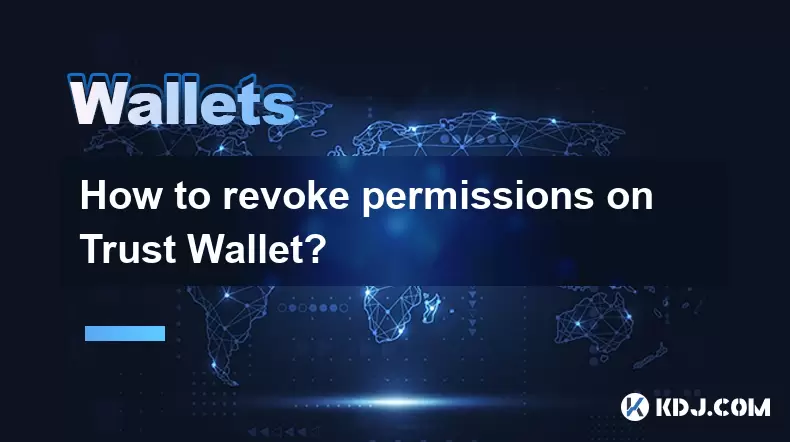
Understanding Permission Revocation on Trust Wallet
Trust Wallet is a popular decentralized wallet used for managing cryptocurrencies and interacting with decentralized applications (dApps). When you connect your wallet to dApps, they often request specific permissions to access your wallet data or interact with certain tokens. Over time, users may wish to revoke these permissions for security reasons or simply because they no longer use the service.
Before proceeding with revoking permissions, it’s important to understand what kind of access rights were granted. These can include:
- Reading wallet balance
- Approving token transfers
- Managing NFTs
Revoking permissions essentially cuts off the ability of a dApp or smart contract to interact with your assets without your explicit consent.
Checking Connected dApps and Permissions
To begin the process of revoking permissions, you need to first identify which dApps have been granted access to your wallet. This step helps ensure you only remove necessary permissions and avoid accidental disconnection from services you still use.
Here's how to check connected dApps:
- Open Trust Wallet app on your mobile device
- Tap on the Browser tab at the bottom
- Go to Settings, then select DApp Permissions
- You’ll see a list of all dApps that currently have access to your wallet
Each entry will show details like the domain name, the chain it's connected to, and the type of permissions granted. This information is crucial when deciding whether to revoke access.
Steps to Revoke Permissions for Specific dApps
Once you’ve identified the dApp you want to disconnect, follow these steps carefully:
- Navigate to the DApp Permissions section as outlined above
- Locate the specific dApp in the list
- Tap on the three-dot menu or swipe left on the dApp entry
- Select Revoke Access or Remove
This action will immediately remove the dApp’s ability to interact with your wallet. The next time you try to use the dApp, you’ll need to reconnect your wallet manually.
It’s worth noting that some dApps may store cached connection data. In such cases, clearing the browser cache within Trust Wallet might be necessary for complete removal.
Managing Token Approval Permissions
Beyond dApp connections, there are also token approval permissions that allow smart contracts to spend a set amount of your tokens. These approvals are common when using decentralized exchanges (DEXs) or yield farming platforms.
To manage token approvals:
- Go to the Wallet tab
- Tap on the three dots icon next to the token you want to review
- Select Token Approvals
- Review the list of contracts that have approval to spend your tokens
If you find any unfamiliar or outdated approvals, you can revoke them by selecting the entry and choosing Revoke Approval. This ensures that unauthorized contracts cannot move your funds without your knowledge.
Clearing Browser Cache After Revoking Permissions
After completing the permission revocation process, it’s a good practice to clear the internal browser cache of Trust Wallet. This step ensures that no residual data remains that could re-establish a connection with previously revoked dApps.
To clear the browser cache:
- Open Trust Wallet
- Tap on the Browser tab
- Go to Settings
- Scroll down and tap Clear Browsing Data
- Confirm the action when prompted
This will erase cookies, cached images, and other temporary files stored by the built-in browser. It’s especially useful if you're experiencing issues where dApps seem to remember your previous connection despite revoking access.
Ensuring Long-Term Security After Revocation
Revoking permissions is just one part of maintaining wallet security. To further protect your assets:
- Regularly audit your connected dApps and token approvals
- Avoid connecting to unknown or unverified websites
- Use hardware wallets for long-term storage of large holdings
- Enable biometric authentication in Trust Wallet settings
By staying proactive about your digital asset management, you reduce the risk of unauthorized access or malicious activity.
Frequently Asked Questions
Q: Can I recover permissions after revoking them?
A: Yes, you can reconnect to the dApp or re-approve token spending limits by interacting with the service again. No data is permanently deleted during the revocation process.
Q: Will revoking permissions affect my token balances?
A: No, revoking permissions does not alter your token balances. It only removes the ability of third-party apps or contracts to interact with your wallet automatically.
Q: Why do some dApps still ask for permission even after I revoked access?
A: Some dApps cache previous session data. Clearing the browser cache inside Trust Wallet should resolve this issue and ensure the dApp forgets your prior connection.
Q: Is it safe to revoke permissions for unknown token approvals?
A: Yes, it is generally safe and recommended to revoke approvals for unknown or unused contracts. Doing so prevents potential misuse of your tokens by dormant or malicious contracts.
Disclaimer:info@kdj.com
The information provided is not trading advice. kdj.com does not assume any responsibility for any investments made based on the information provided in this article. Cryptocurrencies are highly volatile and it is highly recommended that you invest with caution after thorough research!
If you believe that the content used on this website infringes your copyright, please contact us immediately (info@kdj.com) and we will delete it promptly.
- Powell, Stablecoin Regulation, and Circle's Bold Move: A New York Minute on Crypto's Future
- 2025-07-02 02:30:12
- Ethereum Price, Tom Lee, and Bitcoin: A New Era for Crypto?
- 2025-07-02 02:30:12
- Hoskinson, Ripple, Cardano DeFi: A New Era of Collaboration?
- 2025-07-02 02:35:12
- BlockDAG, ALGO, and the Crypto Trends Shaping 2025
- 2025-07-02 01:50:12
- Cold Wallet, Token, Gains: Is CWT the Smartest Crypto Move?
- 2025-07-02 01:10:12
- Pi Coin's Rocky Ride: Support Levels, Recovery Timeline, and What the Experts Are Saying
- 2025-07-02 01:10:12
Related knowledge
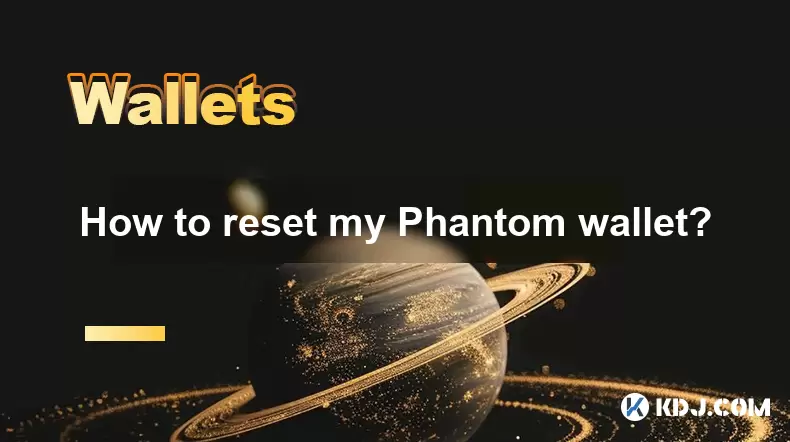
How to reset my Phantom wallet?
Jul 02,2025 at 12:36am
Understanding the Need for Resetting Your Phantom WalletIf you're using a Phantom wallet, you may encounter situations where resetting your wallet becomes necessary. This could be due to forgotten passwords, seed phrase issues, or account corruption. Phantom is a non-custodial wallet primarily used for interacting with the Solana blockchain, and it stor...
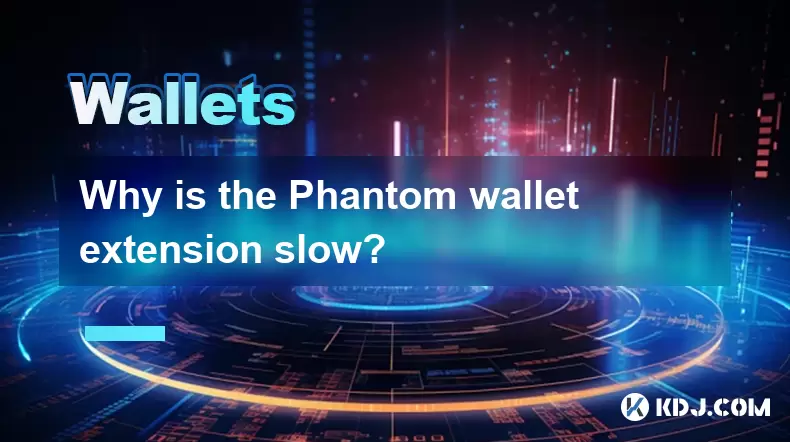
Why is the Phantom wallet extension slow?
Jul 02,2025 at 04:15am
Phantom Wallet Extension: Why Is It Slow?Phantom wallet is a widely used browser extension for interacting with decentralized applications (dApps) on the Solana blockchain. Despite its popularity, some users report that the Phantom wallet extension runs slowly at times. This article delves into potential reasons behind this performance issue and provide...
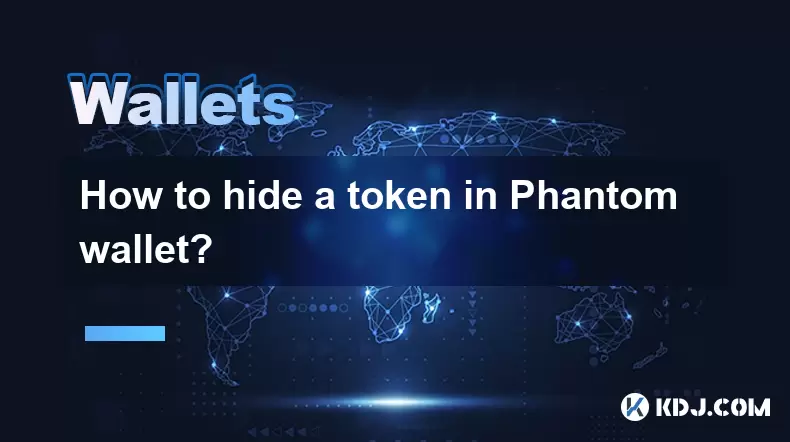
How to hide a token in Phantom wallet?
Jul 01,2025 at 05:49pm
Understanding the Phantom Wallet InterfacePhantom wallet is a popular non-custodial wallet used primarily for interacting with the Solana blockchain. It allows users to store, send, receive, and manage various tokens, including both fungible and non-fungible tokens (NFTs). Before attempting to hide a token, it's essential to understand how the wallet in...
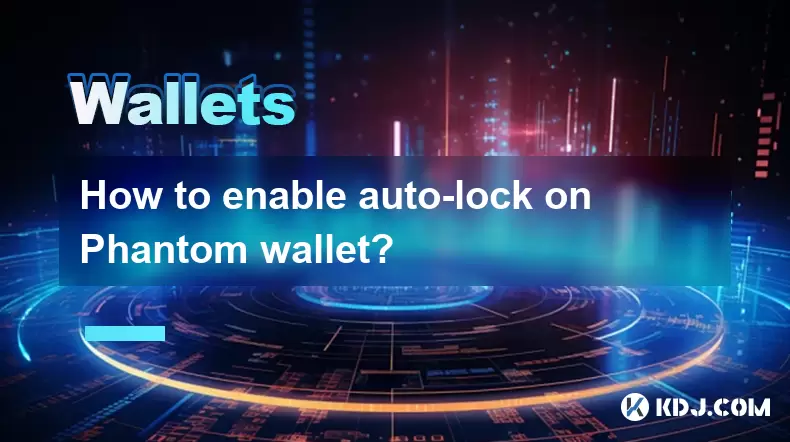
How to enable auto-lock on Phantom wallet?
Jul 01,2025 at 04:01pm
What is Auto-Lock in Phantom Wallet?Phantom wallet is a popular non-custodial cryptocurrency wallet used primarily for interacting with the Solana blockchain. One of its security features includes the ability to set an auto-lock timer, which ensures that the wallet locks itself automatically after a period of inactivity. Auto-lock enhances security by p...
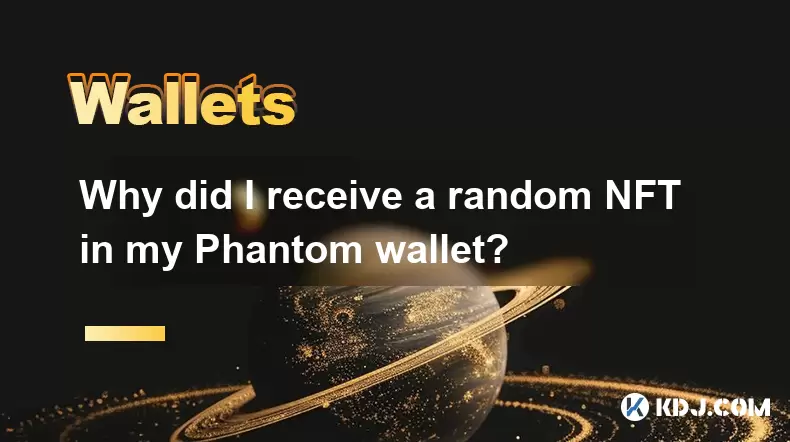
Why did I receive a random NFT in my Phantom wallet?
Jul 01,2025 at 09:00pm
Receiving an Unexpected NFT in Your Phantom WalletIf you've recently opened your Phantom wallet and noticed an unfamiliar NFT appearing in your collection, you're not alone. Many users have reported receiving random or unsolicited non-fungible tokens, often without any prior interaction with the project or sender. This phenomenon has become increasingly...
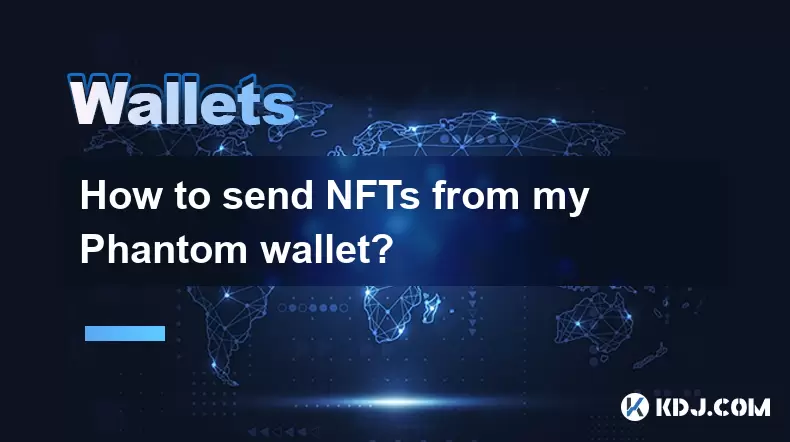
How to send NFTs from my Phantom wallet?
Jul 02,2025 at 03:15am
What is Phantom Wallet and Why Use It for NFT Transfers?Phantom wallet is a non-custodial cryptocurrency wallet primarily used for interacting with the Solana blockchain. It supports both tokens and NFTs, making it a popular choice among users who engage in decentralized finance (DeFi) or digital collectibles. The interface is user-friendly, allowing ev...

How to reset my Phantom wallet?
Jul 02,2025 at 12:36am
Understanding the Need for Resetting Your Phantom WalletIf you're using a Phantom wallet, you may encounter situations where resetting your wallet becomes necessary. This could be due to forgotten passwords, seed phrase issues, or account corruption. Phantom is a non-custodial wallet primarily used for interacting with the Solana blockchain, and it stor...

Why is the Phantom wallet extension slow?
Jul 02,2025 at 04:15am
Phantom Wallet Extension: Why Is It Slow?Phantom wallet is a widely used browser extension for interacting with decentralized applications (dApps) on the Solana blockchain. Despite its popularity, some users report that the Phantom wallet extension runs slowly at times. This article delves into potential reasons behind this performance issue and provide...

How to hide a token in Phantom wallet?
Jul 01,2025 at 05:49pm
Understanding the Phantom Wallet InterfacePhantom wallet is a popular non-custodial wallet used primarily for interacting with the Solana blockchain. It allows users to store, send, receive, and manage various tokens, including both fungible and non-fungible tokens (NFTs). Before attempting to hide a token, it's essential to understand how the wallet in...

How to enable auto-lock on Phantom wallet?
Jul 01,2025 at 04:01pm
What is Auto-Lock in Phantom Wallet?Phantom wallet is a popular non-custodial cryptocurrency wallet used primarily for interacting with the Solana blockchain. One of its security features includes the ability to set an auto-lock timer, which ensures that the wallet locks itself automatically after a period of inactivity. Auto-lock enhances security by p...

Why did I receive a random NFT in my Phantom wallet?
Jul 01,2025 at 09:00pm
Receiving an Unexpected NFT in Your Phantom WalletIf you've recently opened your Phantom wallet and noticed an unfamiliar NFT appearing in your collection, you're not alone. Many users have reported receiving random or unsolicited non-fungible tokens, often without any prior interaction with the project or sender. This phenomenon has become increasingly...

How to send NFTs from my Phantom wallet?
Jul 02,2025 at 03:15am
What is Phantom Wallet and Why Use It for NFT Transfers?Phantom wallet is a non-custodial cryptocurrency wallet primarily used for interacting with the Solana blockchain. It supports both tokens and NFTs, making it a popular choice among users who engage in decentralized finance (DeFi) or digital collectibles. The interface is user-friendly, allowing ev...
See all articles

























































































